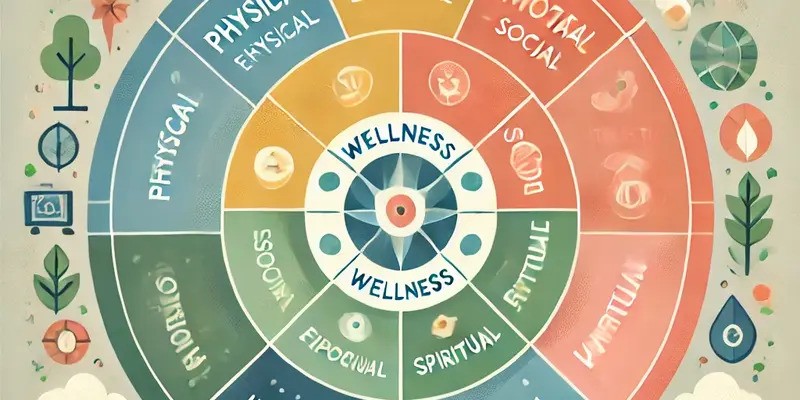Introduction: Exploring the Wellness Gauge
The wellness gauge is a dynamic tool designed to evaluate an individual’s overall health. It goes beyond just tracking physical well-being and delves into various dimensions that contribute to a holistic life. This gauge helps assess physical, emotional, mental, social, and spiritual health, providing insights that empower individuals to identify areas for improvement and growth in their pursuit of optimal well-being.
The Concept of the Wellness Scale
The wellness scale, also known as the wellness gauge, serves as a visual representation of different facets of an individual’s health. This scale measures areas such as physical fitness, emotional balance, and social interactions. By rating these aspects, the wellness scale offers a snapshot of a person’s health, highlighting strengths and areas needing attention. This self-assessment tool encourages focus on personal health goals and areas requiring improvement.
Wellness Indicators: Key to Understanding Health
Wellness indicators are measurable factors that offer insights into an individual’s overall health. These can be objective markers like sleep quality, physical activity, or blood pressure, as well as subjective factors such as stress levels and emotional satisfaction. Tracking wellness indicators regularly provides valuable data, enabling individuals to make informed decisions and take action to enhance their well-being.
How to Assess Your Wellness
Assessing wellness involves looking at multiple dimensions of life—physical health, emotional stability, mental clarity, and social connections. Regular check-ups, fitness evaluations, and self-reflection on emotional health contribute to a comprehensive assessment. Additionally, tools like fitness trackers, mood journals, or health apps can aid in tracking daily wellness and help individuals recognize shifts in their well-being.
The Wellness Wheel: A Holistic Approach to Health
The wellness wheel is a powerful visual tool that divides wellness into several key areas, such as physical health, emotional well-being, and intellectual growth. By rating each of these segments, individuals can identify areas where they feel satisfied and others that may require more attention. This approach provides clarity and direction, enabling one to focus on specific areas of improvement.
The 5 Wheels of Wellness
The five wheels of wellness encompass the following core components of a balanced life:
- Physical Wellness: Prioritizing exercise, nutrition, and rest.
- Emotional Wellness: Managing stress, fostering resilience, and maintaining emotional balance.
- Social Wellness: Building strong and supportive relationships.
- Intellectual Wellness: Embracing lifelong learning and mental stimulation.
- Spiritual Wellness: Seeking purpose and a deeper sense of meaning in life.
Focusing on these areas ensures that individuals create a foundation for overall health and well-being.
The 7 Dimensions of Wellness: A Comprehensive View
The seven dimensions of wellness broaden the focus to include not only the physical, emotional, and social dimensions but also financial and environmental health. These dimensions are:
- Physical Wellness
- Emotional Wellness
- Social Wellness
- Intellectual Wellness
- Spiritual Wellness
- Financial Wellness
- Environmental Wellness
Incorporating these seven dimensions provides a more well-rounded understanding of overall health and well-being.
The 4 Categories of Wellness
Wellness is often divided into four major categories, each addressing a key aspect of well-being:
- Physical Wellness: Exercise, nutrition, and self-care practices.
- Emotional Wellness: Emotional regulation, stress management, and mental health.
- Social Wellness: Building positive relationships and strong social connections.
- Intellectual Wellness: Critical thinking, creativity, and continuous learning.
These categories form the foundation for a balanced and thriving life.
The 7 Essential Physical Needs
Maintaining physical wellness requires meeting essential needs that support the body’s optimal function. These include:
- Nutrition: A balanced and nutrient-rich diet.
- Exercise: Engaging in regular physical activity.
- Sleep: Prioritizing quality rest and recovery.
- Hydration: Maintaining proper fluid intake.
- Sunlight: Ensuring exposure to natural light for mood regulation.
- Rest: Taking breaks to prevent physical and mental burnout.
- Breathing: Practicing mindful breathing for relaxation and stress relief.
Meeting these physical needs is critical for overall health and vitality.

The 8 Pillars of Wellness: A Holistic Framework
The 8 pillars of wellness offer a more expansive view of well-being, incorporating different areas of life for a balanced approach to health. These pillars include:
- Physical Wellness: Exercise, sleep, and nutrition.
- Emotional Wellness: Stress management and emotional intelligence.
- Social Wellness: Nurturing healthy relationships.
- Intellectual Wellness: Keeping the brain active and engaged.
- Spiritual Wellness: Finding meaning and connection to a higher purpose.
- Occupational Wellness: Achieving satisfaction and balance in work and career.
- Environmental Wellness: Creating and maintaining a healthy, sustainable environment.
- Financial Wellness: Managing finances, budgeting, and reducing financial stress.
Together, these pillars promote a comprehensive approach to health and well-being.
The 4 Core Principles of Wellness
The core principles of wellness guide individuals toward sustainable health practices. These principles are:
- Balance: Striving for harmony between work, leisure, and self-care.
- Self-Responsibility: Taking ownership of one’s health and decisions.
- Integration: Incorporating wellness practices into daily life.
- Purpose: Seeking fulfilment and meaning in all aspects of life.
Following these principles helps establish a long-term commitment to wellness and growth.
The 8 Areas of Self-Care
Self-care is a fundamental aspect of maintaining wellness, and it encompasses eight key areas:
- Physical: Exercise, diet, and rest.
- Mental: Reducing stress and enhancing mental clarity.
- Emotional: Managing feelings through mindfulness and expression.
- Social: Fostering relationships and building a strong support system.
- Spiritual: Connecting with purpose or inner peace.
- Professional: Attaining satisfaction and balance in work.
- Environmental: Maintaining a peaceful and healthy environment.
- Financial: Managing money and reducing financial stress.
Caring for these areas promotes balance and health across all aspects of life.
Conclusion: A Comprehensive Understanding of Wellness
Wellness is a multifaceted concept that goes beyond just physical health. It is about achieving balance in all areas of life, including emotional, social, intellectual, and financial well-being. Tools like the wellness gauge, wellness wheel, and pillars of wellness help individuals assess and improve their overall health. By consistently evaluating wellness, individuals can make proactive steps toward living a fuller, more balanced life.
